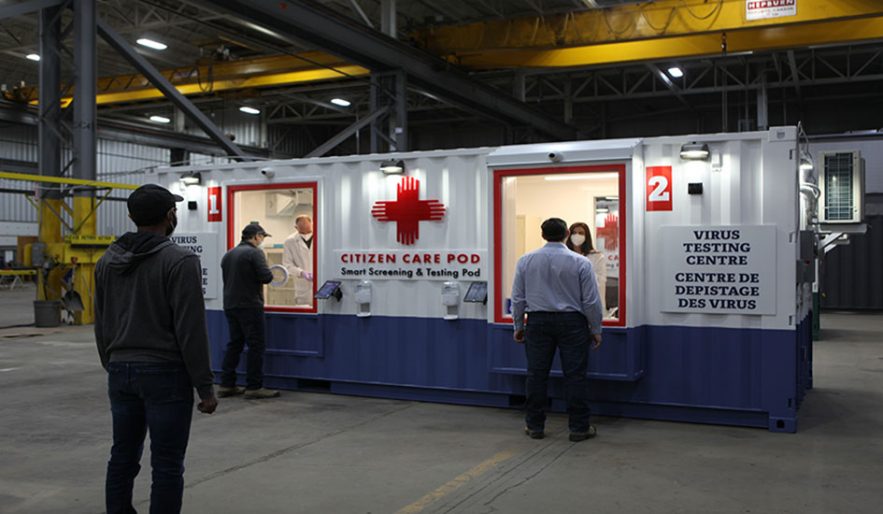Citizen Care Pod, a smart screening and testing pod for COVID-19 that integrates intelligent technology within a modular design, is now available.
Citizen Care Pod Corporation collaborated with WZMH Architects, PCL Construction, Insight Enterprises and Microsoft to launch the customizable unit outfitted with the capabilities to enable turnkey mobile COVID-19 testing in high-traffic business environments and communities with the goal to expedite testing, screening, and eventually vaccination on mass scale.
PCL Construction, using modular construction methods, is manufacturing and assembling the pods by retrofitting 20-foot or 40-foot shipping containers that are equipped with four to 10 testing stations designed to physically and safely separate the frontline testing administrator from the patient being tested or screened.
Recognized as a safer, sustainable, and more energy-efficient approach to build, the Citizen Care Pod’s modular construction means it can be rapidly installed to any site, including high-traffic or remote locations.
“At PCL, we anticipate challenges and are proactive in developing solutions that make construction safer, more efficient and more sustainable. The Citizen Care Pod’s modular construction and integrated technology make it a sustainable, plug-and-play solution that can be rapidly deployed to support the safe reopening of our economy,” said Kelly Wallace, vice president and district manager, PCL Construction.
In partnership with a lab diagnostics provider, all customizable testing will be administered outside of the pod to address concerns about testing in confined spaces.
The pod is also equipped with a suite of technologies powered by the Microsoft Azure cloud platform and Azure AI, including the Insight Connected Platform and PCL’s Job Site Insights Internet of Things hubs.
While the immediate focus of the Citizen Care Pod is to provide relief to over-burdened hospitals, the pod can be used beyond the pandemic to test and screen for flu season and viral outbreaks, deliver vaccines and it can be augmented to address future public health needs.










